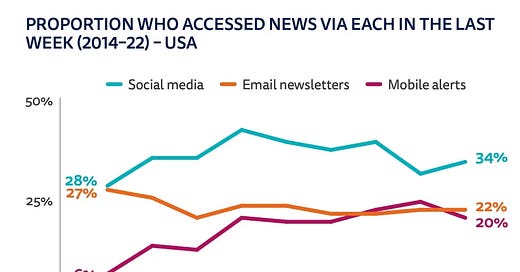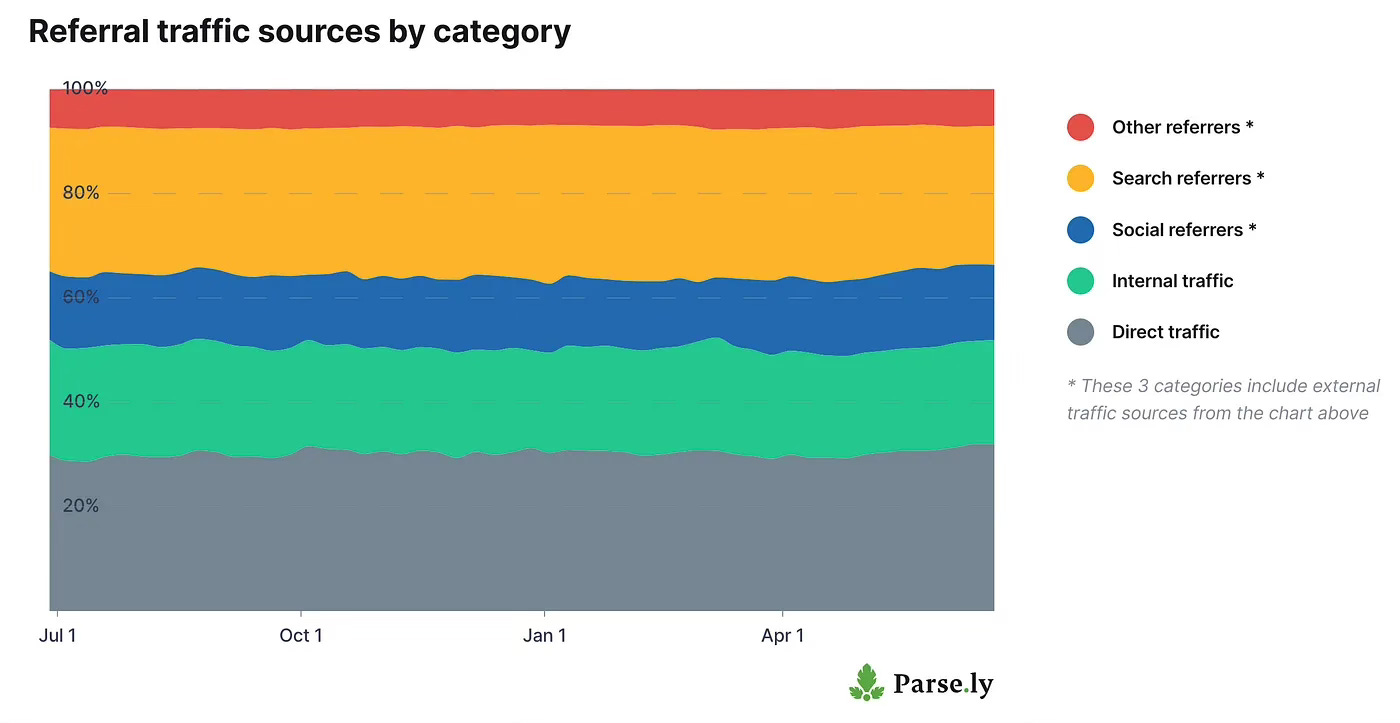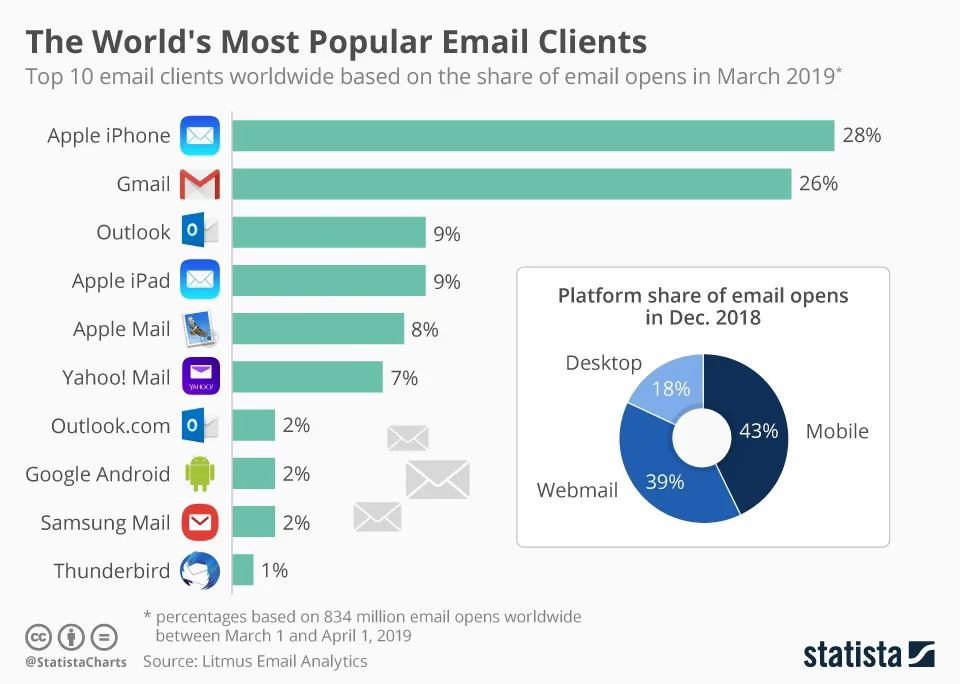Email newsletters have been the darling of the digital media world over the past 5 years or so, but I’m increasingly concerned the industry has dramatically over-invested in the space.
The surge in popularity of email newsletters came about as a response to two factors: a dramatic decrease in traffic from social media platforms, primarily Facebook, and the dreaded “pivot to video”. Having been let down twice by these platforms, publishers sought a new digital strategy in a domain they could control. For many, the apparent solution was email newsletters. However, I believe this enthusiasm may be misplaced, and here's why...
Discoverability Disadvantage
Newsletters are largely not indexed by search, and search makes up nearly ~30% of all publisher traffic. When publishers focus their newsroom talent around the production of a newsletter, they are already placing the content at a significant discoverability disadvantage.
Declining Usage
Despite significant investment in the medium, consumers are getting their news from email LESS AND LESS. Every year the Oxford Digital News Report comes out and I immediately flip to this chart below, anxious to see if there has been a sudden spike in email newsletter usage. But alas, every year usage is either flat or declining. In the past eight years, the medium has seen a 21% decline in overall usage as it relates to news.
Eroding Analytics
Apple’s mail app is the world’s most popular email client, and Apple’s push toward privacy has presented significant challenges…
1. Analytics associated w/ open rates, etc are highly disrupted as iOS, iPadOS, and MacOS, block pixel tracking by default.
2. Apple introduced Hide My Email, which encourages users to provide publishers with a unique and disguised email address, making reconciliation with existing user data nearly impossible.
Gmail’s Domination
Gmail, which is the world’s second most popular email service has started to present its own challenges. Gmail now aggressively sorts emails for many users into five categories automatically (Primary, Social, Promotions, Updates, Forums).
This optimizes the email experience away from newsletters.
Our Inbox Is Hell
On a very practical level, nobody likes their email inbox. It is a mish-mashed collection of spam, notes, important information, and ephemeral communication.
Dumping the products of some of your most resource-intensive newsroom efforts into the wasteland of email inboxes is an outright silly thing to do.
So What Should We Be Doing?
We must divorce the message and the medium. Untethering the great content of newsletters from the crumby medium in which we’ve deployed them in. Doing this will be critical to making the newsletter format work.
If your newsroom is staffing up newsletters, put the damn newsletters on the front page of your site. Take an article template and format it appropriately for the newsletter content written for email — give it the benefit of SEO/social/internal tailwind.
Build newsletters into your apps! Instead of hitting send on email to compete with every other horrid thing making its way to your reader’s inbox, hit send on the push notification to readers to the experience. Substack is doing this wonderfully with their app.
Lastly, if you are building a newsletter around a personality, promote access to the personality — not the thing they write, because they likely produce, and monetize, content in a spectrum of mediums.
As with all my medium posts, they’ve not been proofed or edited, please excuse any spelling or grammatical errors. I largely write these posts for the benefit of my students in JOUR E-182 Audience Engagement: Journalism in the Age of Google, Facebook, Twitter, and Apple at Harvard EXT/DCE. These posts do not represent the opinions of my employer.






Good piece. It was always interesting to me that news orgs responded to Substack by beefing up their own newsletter efforts, as if email newsletters were the secret thing that mattered. But when we started Substack, we weren’t really thinking about it as newsletters. We started off just calling them “subscription publications,” for which email and the web were equally important, and inseparable, layers. We later switched to saying “newsletters” simply because that was easier for people to instantly understand. We figured that once they started using Substack they’d see it was much more than just a newsletter.
Today, email remains an important component—or option—of a substack. But the things that really matter, which email serves as a proxy for, are the direct relationships between writer and reader, the writer’s ownership of those relationships, and the ability for readers to directly receive everything published by the writers they subscribe to. It used to be that email was the best way to serve those needs, but now the Substack app does, too (on web and on smartphones).
Nice post Matt. I'm seeing folks come to me via the app, not email. I subscribe to two non-Substack publications via email (Money Stuff, Stratechery) and can barely keep up with those. So, to have the option to keep others inside the app helps.
Not really looking at open rates anymore. Can't tell if they are real or a signal of anything for that matter. I see views, likes, comments as more useful, and overall traffic, too.